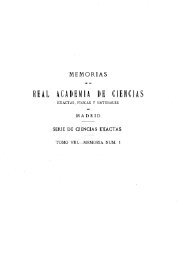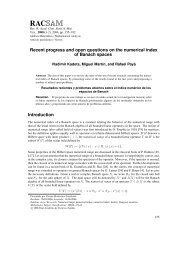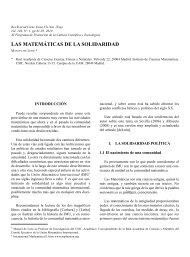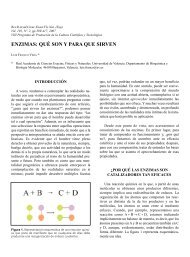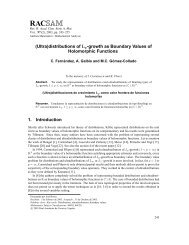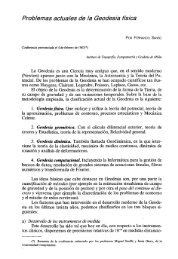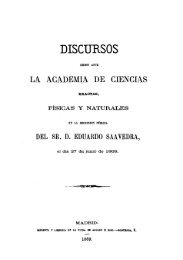The water footprint and virtual water exports of Spanish tomatoes
The water footprint and virtual water exports of Spanish tomatoes
The water footprint and virtual water exports of Spanish tomatoes
- No tags were found...
Create successful ePaper yourself
Turn your PDF publications into a flip-book with our unique Google optimized e-Paper software.
6 THE WATER FOOTPRINT OF TOMATO PRODUCTIONare notable (open-air - rainfed or irrigated- versus greenhouse).Rainfed open-air tomato production has by far thehighest <strong>water</strong> <strong>footprint</strong> with 966 l/kg, <strong>of</strong> which 84% is grey<strong>water</strong> <strong>footprint</strong>. <strong>The</strong> grey <strong>footprint</strong> <strong>of</strong> irrigated systems is,in comparison to that <strong>of</strong> rainfed systems, much lower, mainlydue to the higher yields <strong>of</strong> these production systems. <strong>The</strong>major producing provinces in Spain have in general low <strong>water</strong><strong>footprint</strong>s in terms <strong>of</strong> l/kg compared to the average <strong>of</strong>the rest <strong>of</strong> the provinces, but a much higher total <strong>water</strong> <strong>footprint</strong>in absolute terms (hm 3 ). This is because theseprovinces produce overwhelmingly the most part <strong>of</strong> the nationalproduction. <strong>The</strong> green <strong>and</strong> blue <strong>water</strong> apparent productivity<strong>of</strong> the tomato production ranged from 2.1 €/m 3 forrainfed systems to 3.1 €/m 3 <strong>of</strong> open-air irrigated systems<strong>and</strong> 7.8 €/ m 3 for greenhouse production. By season, tomatoproduced in the middle season (June to September) renderedthe lowest apparent <strong>water</strong> productivity with 2.7 €/m 3 .By contrast, <strong>tomatoes</strong> produced in early (January to May)or late season (September to December) rendered higher apparent<strong>water</strong> productivities, 7.5 <strong>and</strong> 9.5 €/l respectively. Inrelation to the origin <strong>of</strong> <strong>water</strong>, ground<strong>water</strong> production presenteda higher blue <strong>water</strong> apparent productivity than that<strong>of</strong> open-air irrigated production, around 7 €/m 3 compared to3 €/m 3 . When analysing the <strong>exports</strong> <strong>of</strong> tomato the yearlyamount <strong>of</strong> <strong>virtual</strong> <strong>water</strong> exported through the tomato <strong>exports</strong>is 4, 88 <strong>and</strong> 134 hm 3 <strong>of</strong> green, blue <strong>and</strong> grey <strong>water</strong> respectively,with an average <strong>water</strong> apparent productivity <strong>of</strong>8.81 €/m 3 .1. INTRODUCTIONIn a context where <strong>water</strong> resources are unevenly distributed<strong>and</strong>, in regions where flooding <strong>and</strong> drought risks maybecome more severe, enhanced <strong>water</strong> management is a majorchallenge not only to <strong>water</strong> users <strong>and</strong> managers but also



